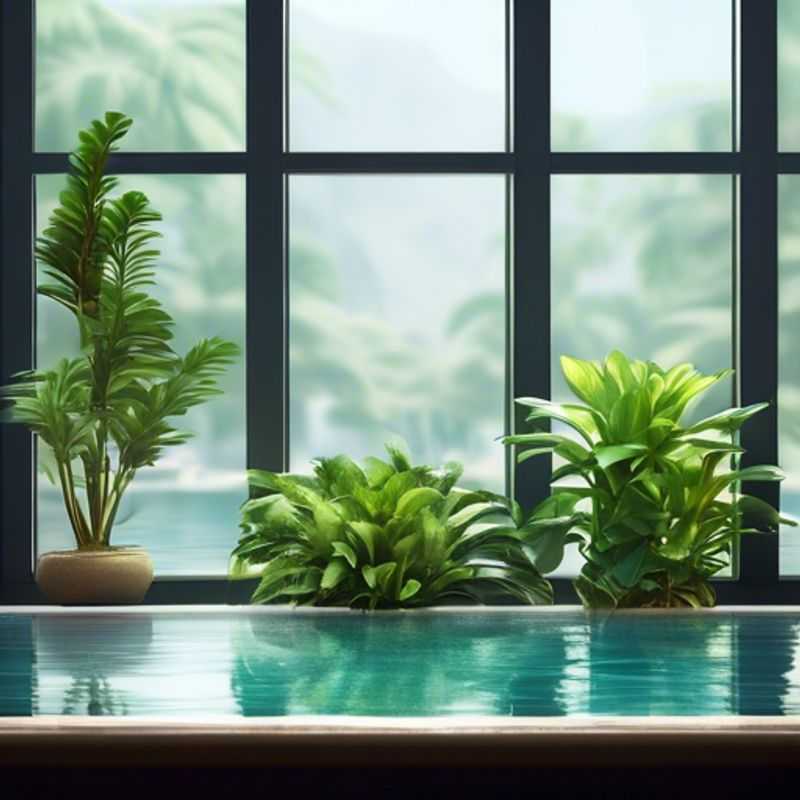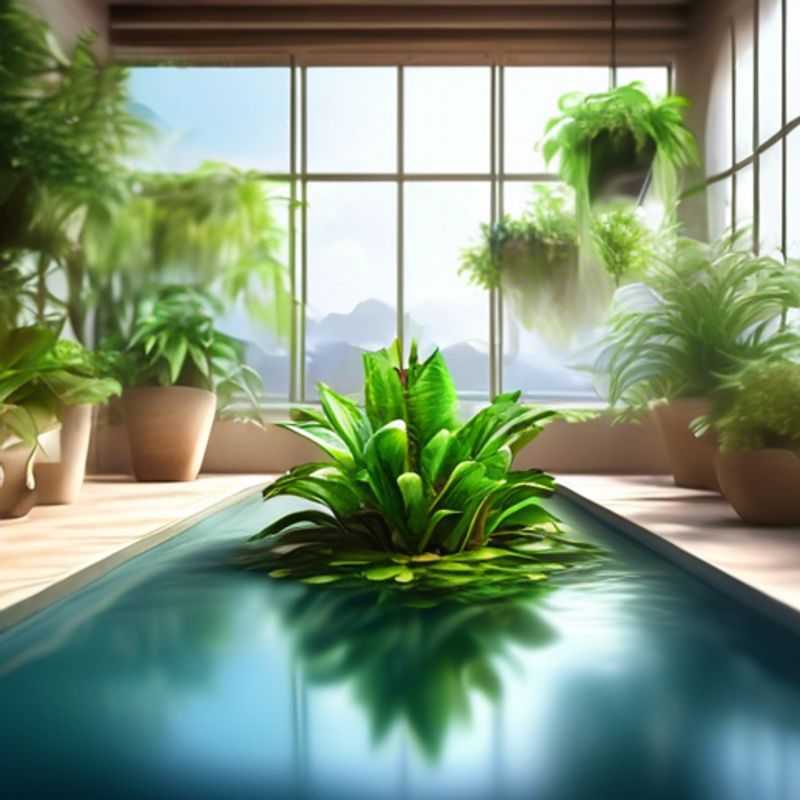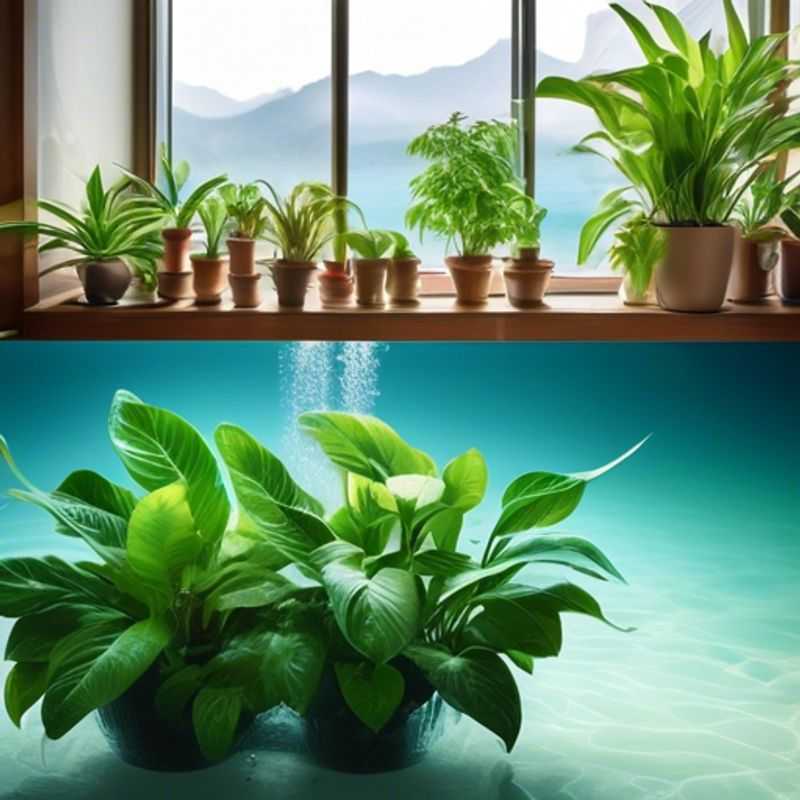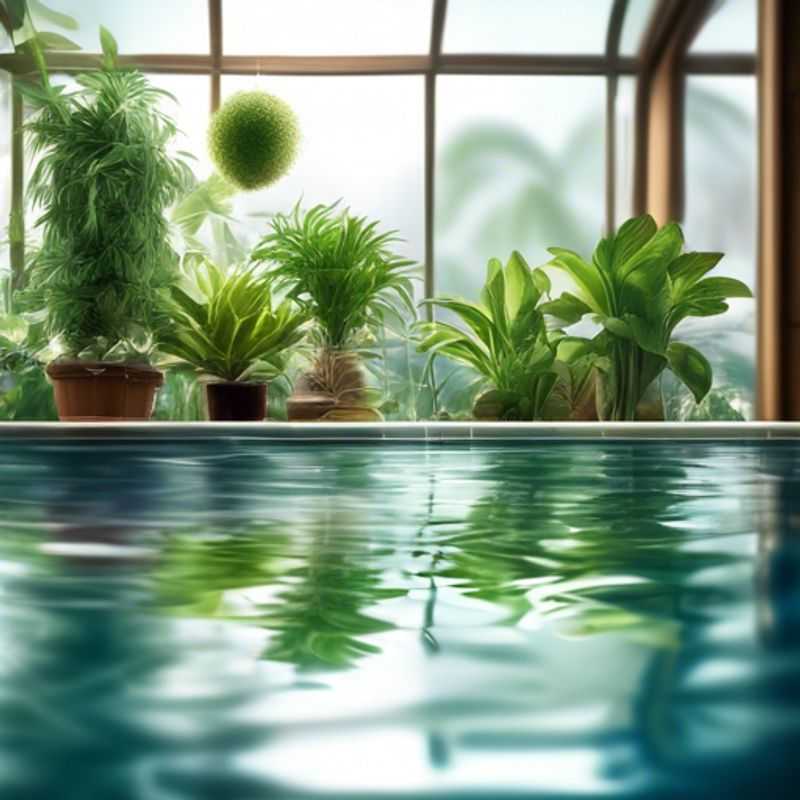Top Things to Know Before Buying Indoor Plants That Grow In Water

Top Things to Know Before Buying Indoor Plants That Grow In Water
Ah, the allure of indoor greenery! But before you dive into the world of water-based plants, let me share a few insights gleaned from my own botanical adventures.

Hydroponic Houseplants: Growing Lucky Bamboo, Chinese Evergreen, and Pothos in Water
Indoor plants such as lucky bamboo, Chinese evergreen, and pothos are not only beautiful but also thrive in water without the need for soil. This method of growing plants is known as hydroponics and is ideal for those who want to enhance their living spaces with greenery.
Lucky bamboo is a popular choice, often associated with good fortune. It can grow in water with just a few inches of the stem submerged. Make sure to change the water every two weeks to prevent stagnation and promote healthy growth.
Chinese evergreen, known for its striking foliage, also adapts well to water propagation. It requires bright, indirect sunlight and should be placed in a container that allows its roots to reach the water easily. Regular water changes are essential for preventing algae growth.
Pothos, a resilient plant, is perfect for beginners. It can grow in various lighting conditions and thrives in water. To propagate, simply cut a stem with a few leaves and place it in water, ensuring that the nodes are submerged. Change the water weekly to keep it fresh.
When planning to grow these plants in water, consider potential costs such as purchasing decorative containers, water-soluble fertilizers, and any additional lighting if natural light is insufficient. Regular maintenance, including water changes and monitoring for pests, is also necessary to ensure the health of your plants.
For those interested in creating a vibrant indoor garden, these soil-free plants offer a low-maintenance and rewarding experience. With proper care, they can thrive and add a touch of nature to any space.

Low-Maintenance Living: The Beauty of Water-Based Plants
Hydroponics, the practice of growing plants in water, offers a fascinating and efficient alternative to traditional soil-based gardening. One of the most significant benefits of hydroponics is the reduced need for frequent watering. Unlike soil-based plants, which require consistent moisture levels, hydroponic plants receive their water and nutrients directly from the solution they're growing in. This eliminates the risk of overwatering or underwatering, simplifying maintenance and allowing you to focus on other aspects of plant care.
Hydroponic systems are especially beneficial for individuals with busy schedules or limited gardening experience. They offer a controlled environment that optimizes plant growth, minimizing the chances of pests and diseases. While the initial setup may require some investment, the long-term benefits in terms of time, water, and resources can outweigh the initial costs. Before embarking on a hydroponic gardening journey, it's important to research the specific needs of the plants you intend to grow. Understanding the ideal water temperature, pH levels, and nutrient requirements will ensure optimal plant health and successful cultivation.

Keeping Water-Based Plants Thriving: The Importance of Fresh Water
Water-based plants are a delightful addition to any home, bringing a touch of nature indoors. These fascinating plants thrive in water, making them relatively low-maintenance compared to their soil-bound counterparts. To keep your water-based plant thriving, it’s essential to provide it with clean, fresh water.
The best water for your water-based plants is clean, distilled, or filtered water. This ensures that the water is free of impurities that can harm the plant. Tap water often contains minerals and chemicals that can build up in the container and eventually damage the plant’s roots.
Regular water changes are crucial. It’s recommended to change the water every 1-2 weeks, depending on the size of the container and the type of plant. During the water change, be sure to rinse the container thoroughly to remove any accumulated sediment or debris. This helps prevent the growth of algae and bacteria that can harm your plant.
With proper care, water-based plants can flourish for years, bringing beauty and tranquility to your home. Remember to observe your plant for any signs of distress and adjust care accordingly. Enjoy your water-based plant and its unique charm!

Root Room and Radiant Light: Essential Factors for Plant Success
When choosing a container for your plant, ensure it has enough depth to accommodate the plant's root system. This is crucial for healthy growth and development. You can find this information on the plant's label or by researching its specific needs online. A good rule of thumb is to choose a container that is at least as deep as the plant's root ball.
Adequate lighting is equally important for your plant's well-being. Different plants have different light requirements. Some prefer bright, direct sunlight, while others thrive in shade. Research your plant's specific needs to determine the ideal amount of light it needs. You can supplement natural light with artificial lighting options if needed. This can be an additional expense, but it's important to provide the right conditions for your plant to thrive.
Remember, healthy plants are happy plants. By ensuring your container has enough depth and providing the right amount of light, you're giving your plant the best chance to flourish. Enjoy the process of nurturing your green friend and reap the rewards of a thriving plant.

Water and Light: Tailoring Your Plant Care to Individual Needs
Understanding your plants' needs is crucial for successful gardening. Each plant has specific water and light requirements. Some plants thrive in abundant sunlight and moisture, while others prefer shade and drier conditions.
Water Requirements: Overwatering or underwatering can harm plants. Observe the soil for dryness, and water thoroughly when it feels dry. If the plant wilts, it might need more water. Avoid overwatering, as this can lead to root rot.
Light Requirements: Plants need sunlight for photosynthesis, but the amount varies greatly. Plants labeled "sun-loving" require full sunlight, while "shade-tolerant" plants do well in partial shade. Observe your plant's leaves for signs of sun stress (e.g., browning, wilting) or shade stress (e.g., stretching toward light, pale color).
Research is key. Before planting, research the specific water and light needs of your chosen plants. Look for information on plant tags, online resources, or gardening books. Adjust your watering and lighting practices based on the plant's needs for optimal growth.

Choosing the Right Pot: Size Matters for Happy Plants
Choosing the right pot size is crucial for your plant's health and happiness. A plant needs enough space for its roots to grow and expand, but too large of a pot can lead to issues.
Firstly, consider the mature size of your plant. A small plant in a huge pot can be overwhelmed and may not thrive. Conversely, a large plant in a tiny pot will be rootbound, leading to stunted growth and potential stress.
A good rule of thumb is to choose a pot that is only slightly larger than the plant's root ball. This allows for some growing room but avoids excessive space, which can lead to overwatering and root rot.
You can also assess the pot size by measuring the plant's diameter and height. Choose a pot that's 1-2 inches wider and deeper than the current pot, especially for faster-growing plants.
Repotting your plant into a larger container should be done every 1-2 years, or when you notice the roots circling around the inside of the pot.
While larger pots can offer more growing space, they also require more watering and may be more prone to root rot. Remember, proper soil and drainage are crucial for a healthy plant, regardless of the pot size.

Keeping Your Water-Based Indoor Plants Thriving: The Importance of Regular Pruning and Cleaning
Maintaining the health and appearance of your water-based indoor plants requires regular pruning and cleaning of their containers. This not only enhances their aesthetic appeal but also helps them thrive.
Pruning involves removing dead or diseased leaves, stems, and flowers. This encourages new growth and prevents the spread of diseases. It is best to use sharp, clean tools to avoid damaging the plant.
Cleaning the container involves removing any debris or algae build-up. This helps to prevent the growth of harmful bacteria and allows for better water circulation. You can use a mild dish soap and warm water to clean the container. Ensure it is thoroughly rinsed before placing the plant back in.
Regular pruning and cleaning can contribute to the overall well-being of your water-based indoor plants. For more detailed information on specific plant species, consult online resources.
